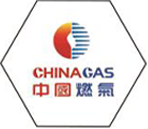
Dec . 04, 2024 16:42
Back to list
صمام تخفيض ضغط الغاز الطبيعي
The Role and Importance of Natural Gas Pressure Reducing Valves
Natural gas is an essential energy resource used in various applications, including heating, cooking, and electricity generation. However, before natural gas can be safely and efficiently utilized, it must be transported from its source to consumers through a network of pipelines. During this transportation, the gas is typically under high pressure. To ensure safe and reliable use of natural gas, it’s crucial to manage this pressure effectively. This is where natural gas pressure reducing valves (PRVs) come into play.
What are Pressure Reducing Valves?
A pressure reducing valve is a critical component that helps maintain a specific pressure level of gas as it moves from high-pressure areas of the pipeline into lower-pressure consumer systems. The primary function of a PRV is to control the pressure of the gas, ensuring that it is delivered at a safe and consistent level to residential, commercial, and industrial users.
How Do Pressure Reducing Valves Work?
.
1. Inlet Pressure Monitoring The valve continuously monitors the incoming pressure of the natural gas. 2. Regulation Mechanism If the pressure exceeds the desired level, the diaphragm within the valve moves, compressing the spring. This action closes the valve's opening, reducing the flow and thus lowering the pressure. 3. Constant Output Conversely, if the pressure drops below the set point, the spring expands, allowing more gas to flow through and thus increasing the pressure back to the desired level.
صمام تخفيض ضغط الغاز الطبيعي

The Importance of PRVs in Natural Gas Systems
1. Safety High-pressure gas can pose significant risks, including explosions and leaks. By ensuring that gas is delivered at safe pressure levels, PRVs are crucial in mitigating these risks.
2. Equipment Protection Many appliances and equipment are designed to operate within specific pressure ranges. Using a PRV protects these devices from potential damage caused by high-pressure gas, thus prolonging their life and reducing maintenance costs.
3. System Efficiency Maintaining optimal pressure levels enhances the overall efficiency of gas distribution systems. By preventing fluctuations and erratic pressure spikes, PRVs help to ensure smooth operations in gas delivery.
4. Regulatory Compliance Many regions have regulations concerning the safe transport and usage of natural gas. PRVs help operators meet these regulations by controlling gas pressure effectively.
Conclusion
Natural gas pressure reducing valves are vital components in the distribution of natural gas. Their ability to regulate pressure not only enhances safety but also contributes to the efficiency and longevity of gas appliances and systems. As the energy landscape continues to evolve, the role of PRVs remains crucial in ensuring the responsible and sustainable use of natural gas. Moving forward, understanding and maintaining these essential devices will be key to anticipating future challenges and optimizing energy delivery systems for generations to come.
Next:
Latest news
-
Safety Valve Spring-Loaded Design Overpressure ProtectionNewsJul.25,2025
-
Precision Voltage Regulator AC5 Accuracy Grade PerformanceNewsJul.25,2025
-
Natural Gas Pressure Regulating Skid Industrial Pipeline ApplicationsNewsJul.25,2025
-
Natural Gas Filter Stainless Steel Mesh Element DesignNewsJul.25,2025
-
Gas Pressure Regulator Valve Direct-Acting Spring-Loaded DesignNewsJul.25,2025
-
Decompression Equipment Multi-Stage Heat Exchange System DesignNewsJul.25,2025

